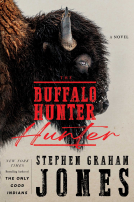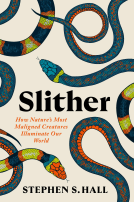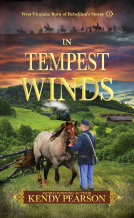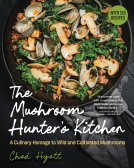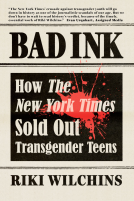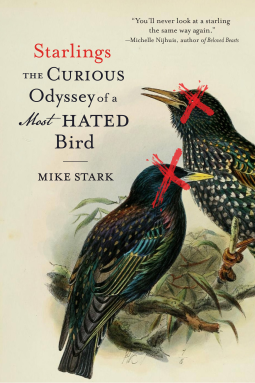
Starlings
The Curious Odyssey of a Most Hated Bird
by Mike Stark
This title was previously available on NetGalley and is now archived.
Send NetGalley books directly to your Kindle or Kindle app
1
To read on a Kindle or Kindle app, please add kindle@netgalley.com as an approved email address to receive files in your Amazon account. Click here for step-by-step instructions.
2
Also find your Kindle email address within your Amazon account, and enter it here.
Pub Date Mar 01 2025 | Archive Date Feb 28 2025
University of Nebraska Press | Bison Books
Talking about this book? Use #Starlings #NetGalley. More hashtag tips!
Description
A bitter, baffling, and sometimes comical war on starlings ensued. Weapons included dynamite, guns, bounties, fake owls, real owls, rubber snakes, balloons, itching powder, and greased building ledges. Still, artists and scientists marveled at their undulating aerial formations, which seemed equal parts poetry and mathematics. Keen listeners recognized the starling as one of the world’s great vocal mimics, imitating everything from fellow birds and cell phones to barking dogs, car alarms, and TV commercials. And then there were their undeniable skills of adaptation and survival. What if there was more to these stubborn villains than once thought?
Mike Stark’s Starlings is a first-of-its-kind history of starlings in America, an oddball, love-hate story at the intersection of human folly, ornithology, and one bird’s tenacious will to endure.
Advance Praise
“Starlings is a smart, entertaining parable about human foolishness, avian ingenuity, and the unintended consequences of ecological meddling. With wit and verve, Mike Stark tells the epic story of the plucky starling—a bird that enchanted Mozart, exasperated farmers, and ultimately conquered America.”—Ben Goldfarb, author of Crossings and Eager
“Americans have been bewitched, befuddled, and enraged by European starlings for more than a century, and the country’s least-loved nonnative bird couldn’t ask for a better chronicler than Mike Stark. Balanced, whimsical, and deeply researched, Starlings tells the story of how they became the bird we love to hate, and in doing so illuminates our own contradictory human nature.”—Melissa L. Sevigny, author of Brave the Wild River
“In Starlings Mike Stark peels back 150 years of myth and misunderstanding to reveal a fascinating story about human folly, animal smarts, and the value of life on Earth. You’ll never look at a starling the same way again.”—Michelle Nijhuis, author of Beloved Beasts: Fighting for Life in an Age of Extinction
Available Editions
| EDITION | Other Format |
| ISBN | 9781496242020 |
| PRICE | $24.95 (USD) |
| PAGES | 248 |
Links
Available on NetGalley
Featured Reviews
 Hannah B, Media/Journalist
Hannah B, Media/Journalist
A well-researched and thorough accounting of one of North America’s most common pains in the neck. Starlings may seem like a regular bird call in the background of our normal soundtrack, but as you’ll learn in Mike Stark’s Starlings - that wasn’t the case for our great-grandparents. Stark walks you through the history of their introductions, control methods, and public opinion. These pages have more about this species than you thought possible!
It’s a fascinating read that I encourage birders, non-birders, and wildlife enthusiasts to check out. Thank you to NetGalley and the publisher for the ARC I’m exchange for an unbiased review.
I really enjoyed reading this about a starling bird, it had that researched element that I was looking for and enjoyed the way this was going on. The historical element worked well and enjoyed the overall package. I learned a lot and really enjoyed getting to go through this and was invested in the historical element.
This was a fascinating read about a species of birds that are typically hated on. As a birder myself, I found it very interesting to learn about the Starlings history. Would recommend to birders or anyone who enjoys reading or being in nature.
Thanks to NetGalley and Bison Books for a copy of the ARC.
 Reviewer 1488471
Reviewer 1488471
This was such a delightful book! The writing was clear and easy to read, and I feel like I learned a lot! The wrath that people feel towards these little birds is completely comical and Stark did a great job of selecting quotes that showed the seriousness of the problem as well as the righteous anger that people were feeling. My personal favorite was "Francis of Assisi, if he ever tangled with [starlings], might have been tempted to whittle himself a slingshot. I wish the humor was as strong throughout the book, many of the later chapters lack that tone, but they still felt very informative and I wasn't bored. The organization of the book was interesting, with each chapter discussing a different approach to the starling problem. This did mean, however, that some chapters felt much more engaging than others, with some of them making me feel so sad I didn't want to read about it. I'm glad I pushed through those, the information and the discussion of invasive species was worth it and those topics that did upset me were also very important. As someone who is pretty new to reading non fiction for pleasure, I highly recommend this book!
 Bill C, Reviewer
Bill C, Reviewer
Starlings: The Curious Odyssey of a Most Hated Bird, by Mike Stark, is a thoroughly researched deep dive into the second-most populous bird in the world. While I admit I might not have needed all the examples given, I can’t fault Stark for his dedication to his topic.
The book moves in non-linear fashion, which can at times be a bit disorienting at first when one shifts time backwards or forwards, but then one settles in and is able to place things in their proper context. We begin in 1959 with the arrival of “the Bird Man”, hired by Mt. Vernon to deal with the massive starling problem and then jump back to 1889 to introduce Eugene Schieffelin, the man best known for introducing starlings into the US. The commonly told story (and the one I thought I knew as well) is that he did so as part of a plan to bring all of the birds in Shakespeare to the States, though Stark shows how that story has been debunked.
The rest of the book moves back and forth between the 1800s and now, showing how the birds came into the country and then expanded at an incredible pace, thanks to various reasons— as the book details in various sections — the starlings’ ability to adapt to an unfamiliar land. On the one hand, they ate harmful insects and added the beauty of their sky-swirling murmurations to their new country. On the other hand, they also ate crops and worsened urban life with their noise and feces. Early on, the negatives were seen to greatly outweigh the positives, and so the birds were targeted for eradication, though such attempts didn’t make more than a dent.
And so we get a number of segments detailing the various ways people and the government tried to solve the starling problem, from the professional “bird men” coming into towns with the promises of “guaranteed techniques” to groups banding together to shoot thousands to government run poison gases, aerial spraying of sticky substances, noise repellents, and more. The scale of death is truly stunning, with starlings being killed by the thousands, tens of thousands, and even millions depending on the method. What was equally surprising to me was that this spate of killing continues into contemporary times. While this has had some effect, Stark shows how habitat destruction, modern agricultural and husbandry methods, and climate change have all contributed to an even greater drop in starling population, as well as other birds, with starling numbers dropping 50 to 90 percent depending on the country.
Stark recognizes the complexity of our relationship with these birds, the billions of dollars of lost crops and other damage, their invasive nature, the way in which they may have a detrimental impact on native birds. But he also is entranced (as who wouldn’t be) by the spectacle of their wheeling flights (nicely explained toward the end thanks to years of research) and also feels sympathy for how they were basically kidnapped and brought here, asking if our complicity in their presence means perhaps we should have a kinder eye toward them.
Starlings is full of detail and well supported with data, interviews, research and the like. The writing is crisp and clear and at times poetic and vivid. For anyone with an interest in this creature particularly, it’s a wealth of information. It’s also a good read for anyone curious about our often-tormented relationship with the creatures we share this world with.
 Reviewer 1676901
Reviewer 1676901
As a birder, I found Mike Stark’s book on starlings both fascinating and thought-provoking. It dives into the history of how starlings were introduced to the U.S. and how they’ve adapted. Stark’s exploration of these resilient yet often misunderstood birds made me reflect on the broader consequences of human intervention in nature. The starling’s story serves as a reminder of how we sometimes fail to consider the full impact of introducing non-native species. A great read for bird enthusiasts and anyone interested in the complexities of nature.
 Tara H, Librarian
Tara H, Librarian
I received an arc of this title from NetGalley for an honest review—interesting information about a much-hated bird, though not the bird's fault.
 Celeste L, Reviewer
Celeste L, Reviewer
[3.5/5] STARLINGS by Mike Stark is a well-researched compilation of historical wonder and hatred of the bird. In this nonfiction account Stark describes how the starling found itself across the pond and on U.S. soil. Native to Europe, it seems in the late 19th century the rich had a compulsion to ship non-native birds to the U.S. largely because they missed seeing and hearing certain birds. Another reason people brought non-native birds into the U.S. was for insect control.
However, the starlings adapted incredibly well to their new environment(s). Within a few decades of their introduction starlings, once loved for their song, became maligned. So plentiful were they that wherever they roosted they'd leave behind literal tons of waste. This especially was a problem in cities where their droppings covered buildings, sometimes to the extent workers carried umbrellas. Residents also hated the noise of the starlings who apparently warble and chatter during the night. Farmers complained the birds ate their crops and mutilated their cattle when going after bugs associated with those animals. Cities launched plenty of campaigns to try to get rid of the starlings. Stark describes those methods, though not in gruesome detail, thankfully. But it is relevant to mention since these attempts showcase how futile they were in the long term.
Of course, there exists the argument of constant eradication vs. letting the birds be since they didn't bring themselves over to the U.S. I appreciated the mention of studies that actually investigated what the birds ate, which is mostly insects and countered the common misconception of a primary diet of crops. It was also interesting to read that what is now Purina (maker of pet food), I believe, had a role in developing a chemical method of exterminating starlings. Moreover, I had no idea the U.S. federal government also spent a considerable amount of time on the "issue" of starlings, some in collaboration with developing those chemical extermination methods.
STARLINGS by Mike Stark incorporates a lot of quotes from historical documents. These include various opinions about the birds, descriptions from observers, release dates into the wild, and accounts of methods taken to control the starling population. However, while well researched, I found this book rather repetitive. I think all of these historical accounts are a boon for someone who cares a lot about birds, or starlings more specifically. But as a casual reader I got bored about half way through and started skimming. The point comes across very well how much people hated starlings even just a couple generations ago. The book has different chapters seemingly focused on different topics. But they always came back to what sort of ways people tried to force out the starlings.
In summary, pick up STARLINGS by Mike Stark as an avid birder, particularly if one has a penchant for history as well. Casual birders may find this book repetitive, though it is a nice repository for lots of historical information.
I love this. I haven't really even thought about Starlings until I read this. They were just normal "birds" in my mind. They were basic. But now I feel an affinity for them.
I was on the fence on reading this book. I'm so glad I did. As a bird lover, I learned so much. I had no idea that starlings had been such a nuisance. And after reading this book, I believe I know where my grapes went last year. There will not be a repeat this year (no birds will be harmed).
I was shocked in the attempts of ridding the bird from cities and Military Bases. I had no idea of the measures taken.
This book provides a history of the introduction to many birds to the US and other countries.
An interesting read for sure.
 Blaine D, Reviewer
Blaine D, Reviewer
Thanks to the University of Nebraska Press and NetGalley for this free ARC in return for my honest review.
I loved this book!! Fascinating look at these birds and the people behind importing them, trying get rid of them and all issues relating to Starlings. Brought over in the 1880's their numbers swelling in the US to over 100 Million and they are difficult birds to eradicate! Author Mike Stark has done some amazing deep dive research into Starling issues, as well as their amazing flying fomations (Murmurations), and despite years of study nobody can really figure out this bird. Extremely intelligent, adaptable to so many different climates and elevations, this is a feisty bird that takes over and makes native US birds leave their habitat. They roost in cities and create huge noise and poop issues! They eat crops and cattle feed. They seemingly resist most every attempt humans make to kill them, and by the end we are amazed at this bird that has caused so many angry headlines and stories. May just be the most hated bird in the US. I found this a very good read, an easy read and a book you can start, read a chapter or two and pick it up a few days later and never miss a beat, Very good work by author Mike Stark!
 Pamela M, Librarian
Pamela M, Librarian
You've probably seen this meme on the Internet: Every disaster movie starts with a scientist being ignored. While the introduction of starlings (Sturnus vulgaris) to North America in the 1890s may not qualify as a full-blown disaster, it was certainly disruptive. And Eugene Schieffelein, a man for whom the description "he has more money than sense" applied, should have known better. How, you ask. Because in the 1850s, Nicholas Pike of the Brooklyn Institute released house sparrows (Passer domesticus) in Central Park. People pleased by seeing a bird from their home country soon became disillusioned. Turned out the adorable looking birds were bullies, stealing nests from native birds, and eating prodigious amounts of grain. Ornithologists and backyard birders alike raised the alarm. But societies devoted to introducing new species would not listen, and sparrows were released in several cities. This particular genie was not going back in the lamp.
Fast forward to the 1890s. Schieffelein releases starlings in Central Park, and once they get their bearings, proceed to have a population explosion. They spread across North America, befouling buildings with their droppings, stuffing themselves on farm produce, and raising a racket that disturbed their unlucky neighbors.
The author describes the spread of starlings, their diets (turned out that about half their diet consisted of insects, so they weren't completely injurious to crops), and the various methods desperate people used to make the blasted things go away. Some methods were fairly innocuous (playing recordings of birds in distress), to the more dangerous mass shootings and poisonings, none of which seemed to work for long. Con artists sold their services as starling removal professionals, with predictably disappointing results.
Starlings are fascinating birds, and the author does a good job of revealing this species habits, foibles, and unexpected charms.
Recommended for medium to large libraries, or where interest in birding is high.
I think I'd like to be a bird in my next reincarnation. I want to be all up in everyone's business and cause a lot of noise all while flying high and not caring what everyone thinks about me.
I learned a lot about what it would be like to be a starling. And to me, that's like being the one relative that you love so much, but can't stand to be around for more than one minute. Ha!
This is a well written book full of facts and antics. When it comes to reading non-fiction about a specific subject, the words need to be entertaining and absorbing. This book is just like that. Highly recommend!
#NetGalley #Starlings
"Starlings" begins with a probably futile 1959 attempt to disappear an enormous and annoying flock of starlings from the city of Mount Vernon, NY. It's a harbinger of things to come, as the history of the starling in North America, once some of the many attempts to introduce it succeeded, seems to be largely a matter of it causing problems for humans. The humans then try to "solve" those problems by harassing and/or killing masses of starlings. I found myself skimming over many of Stark's descriptions of the methods involved: "inhumane" is about the mildest appropriate descriptor.
Too, the numbers slaughtered might bring to mind the history of the passenger pigeon, which once filled the skies in such numbers as to block out the sun, but which we succeeded in extirpating anyway. As Mike Stark notes later in the book -- though he doesn't directly make the point -- humans are now engaged in a mass slaughter of birds in general. The avian population of North America has tanked by 50 percent in the last couple of decades, and starlings' numbers seem to be tanking along with it. As one ornithologist remarks, if even these extraordinarily fecund, adaptable, clever birds are in trouble ...
It's undeniable that starlings can crowd out native birds (much as humans crowd out other species, eh?). They descend on CAFOs and eat the grain meant for the livestock. (One might bitterly suggest that it would be better to eliminate CAFOs than starlings.) Almost all the birders and ornithologists Stark talked to seem to detest them. And yet ...
Walking in Brooklyn's Prospect Park, I hear a many-voiced twitter-whistle-buzz-whistle and look up to see a tree full of starlings. A million parked on my block would, I'm sure, be overwhelming, but a treeful in a park just sounds lovely. Their summer plumage is brilliantly iridescent; their winter plumage is black with what Stark calls "playful polka dots." They flock in gorgeous, ever-shifting, mathematically and behaviorally fascinating murmurations. For all the harm they do, I'm entranced by them, and frightened by the significance of their decline.
Four stars rather than five, because I could have done with fewer explicit descriptions of slaughter, and because the narrative is more discursive than suits my taste. But overall fascinating and informative, and I appreciated the author's ambivalence about these remarkable birds. Many thanks to NetGalley and the University of Nebraska Press for the ARC.
 Educator 1652211
Educator 1652211
Thanks to NetGalley and the publisher for providing access to an eARC of this book.
When was the last time you really looked at a bird, gave it your full attention, heard its song? Imagine that one species had the whole country’s attention. Once, the starling did. *Starlings: The Curious Odyssey of a Most Hated Bird* traces the strange, often absurd history of this bird in America - introduced not by accident, but by human hands, released into Central Park by a man who wanted to fill our skies with more songs (and the acclimatization societies that followed). What followed was an ecological and cultural spectacle: a bird that flourished too well, that filled the skies and the cities, that became not just a nuisance but a national obsession. Where this book shines is in capturing the absurdity of it all: a man shooting starlings made the front page of *The New York Times* (can you imagine?)….and people rallied to his cause. Poets dueled it out in 20th. century newspapers both for and against the birds. The government deployed chemical weapons to try to contain, if not eradicate, the species. Reading these stories, I almost yearned for these days - a simpler time, if you will.
In places, *Starlings* feels more like an anthology of curiosities than a structured history, jumping between towns and time periods without much of a guiding thread. Many claims waver between science and folklore, never quite settling on the truth - although the last few chapters start to discuss modern research. And yet, there’s something mesmerizing about reading historical accounts of these birds from a hundred years ago, seeing the way different cities reacted and what it reflected about the humans - our impulse to shape nature and our blindness to the consequences pursuit of fleeting joy (like buying and releasing 100 birds). In a world that feels increasingly void of community and connection with nature, I was stricken with the level of collective action that arose for something as seemingly minor as a starling’s disturbance.
And maybe, that’s because - up until now - I’ve barely noticed them. Perhaps that is the real tragedy, not the damage starlings have caused for biodiversity or the fortunes spent trying to contain their mess, but the fact that they have faded into the background, just another part of the urban landscape, unnoticed and unremarkable for most people. The next time you step outside, stop and look - really look - at the “trash birds” around you. They still deserve our attention.
Readers who liked this book also liked:
The How-To Experts at Storey Publishing
Crafts & Hobbies, Home & Garden, Nonfiction (Adult)
Stephanie Cowell
General Fiction (Adult), Historical Fiction, Literary Fiction







